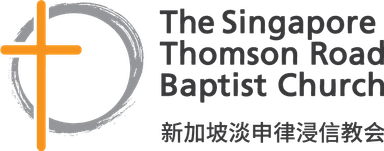Last 5 Days

Cities of Refuge

Click here to read Scripture
After concluding the narrative of the division of the land among the tribes, Chapters 20 and 21 chronicle how the cities of refuge and the cities allotted to the Levi, two city typology of special function and significance, were distributed, respectively.
Chapter 20 focuses on the cities of refuge. The appointment of the cities of refuge is not a new command, but one that had been commanded by Moses in the past (Exodus, Numbers, and Deuteronomy all record it). It was only at this point in time, in the division of the land, that the Lord God commanded Joshua anew. There were six cities of refuge, set up according to God's design and authority. These six cities were spread out over all the land of the Israelites, three on the east side of the Jordan River and three on the west side of the Jordan River, in three sections, north, central, and south. The roads leading to these cities were also well built. The purpose of the cities of refuge was so that people could flee there in times of distress - anyone who killed a person without intent could flee there, so that he might not die by the hand of the avenger of blood, till he stood before the congregation. These cities of refuge were also for all Israel. In verses 2 and 3, we can see from the author's use of the words "you" and the appointment of the cities within themselves, that the cities of refuge were established for their own benefit.
What kind of people were those who fled to the cities of refuge? They were "those who killed by without intent". This refers to two kinds of people. First, those who killed unknowingly, and second, those who killed without prior knowledge, without premeditation, and without a plan. In a nutshell, it means that the killing is not done out of hatred, intention or premeditation, but purely out of accident. These accidental manslayers can flee to any city of refuge and seek protection. But instead of just letting him be in the city, he needed to come to the entrance of the gate and present his case to the elders of the city. Now, these cities belonged to the Levites, and these elders were supposed to be Levites familiar with the law of the Lord. Here, if the elders judged it to be a killing without intent and unknowingly, the manslayer would be able to stay in the fleeing city and be protected.
Some would argue, would that not be letting the manslayer off too easily? Isn't it a supposed to an eye for an eye, a life for a life? The truth is, being taken in by the city of refuge is not the same as being acquitted of a crime that is less than death. The manslayers are still detained in the city and need to remain in the city and fend for themselves. And at what point would they regain their freedom? They could only regain their freedom when the high priest died.
What are some of our reflections from this narrative of the cities of refuge?
First, these cities of refuge were set apart and designated. We see this in verses 7 and 8. The setting apart was done because the division of the land west of the Jordan had just been completed and the nine and a half tribes had not yet actually taken possession of the land and given it to the Levites, so these cities were first “set apart”. "Designated" because the three cities on the east side of the Jordan had already been given to the two and a half tribes, so they could “designate” these parcels of land. These actions signify that it is the Israelites who are set apart as a place for the Lord's use. By setting apart the fugitive cities, God was building a culture of salvation in the Israelite community; and this is the same culture of salvation that this nation will bring to the world. In the same way, God's plan of salvation continues when Jesus Christ redeemed us, giving us sinners an opportunity to be forgiven and to return to God.
Secondly, the manslayer could only be set free when the high priest passes on. The death of the high priest symbolically became the atoning sacrifice for the sins of the manslayer. In fact, even in the case of manslaughter, it is still the blood of the innocent that is shed. But the principle of Scripture remains, " Whoever sheds the blood of man, by man shall his blood be shed" (Genesis 9:6). Therefore, the death of the high priest here becomes a symbol of substitution, substituting his death for the death that the manslayer should have borne. This reminds us of the merciful and faithful High Priest, the Lord Jesus Christ, who offered a redeeming sacrifice for the sins of all men. He is the High Priest who is sympathetic to our weaknesses, willing to show mercy, to be gracious, and to be our help at all times. He is our refuge, our strength, and our constant help in times of trouble. He is willing to save us when sinners are willing to repent and turn to Him.
Thirdly, what we can learn more from the account of the fleeing city, from the Lord Jesus as our High Priest, and as that atoning sacrifice, is that God is holy and righteous. He judges sin, and maintains discipline. He does not regard the guilty as innocent. At the same time, God is merciful and loving, and He is willing to forgive and extend grace to the repentant. When we recognise that we are sinners, are we willing to turn back to the God of grace and mercy?
Prayer: Dear Heavenly Father, thank You for Your salvation, so that I, as a sinful person, may receive Your grace and mercy, and Your forgiveness so that I may be reconciled with You. Help me to share your love, mercy, and grace with those around me, so that they may know you personally. In the name of the Lord Jesus, I pray, Amen.
